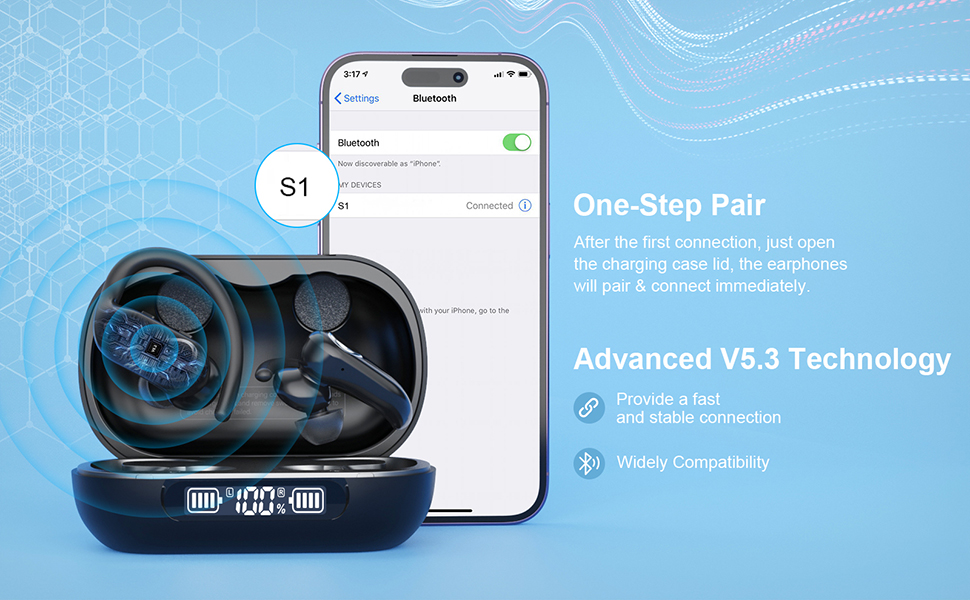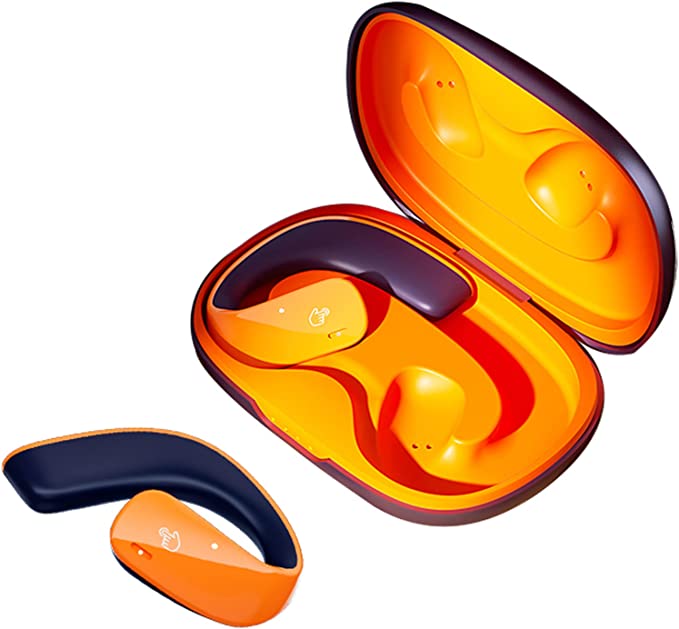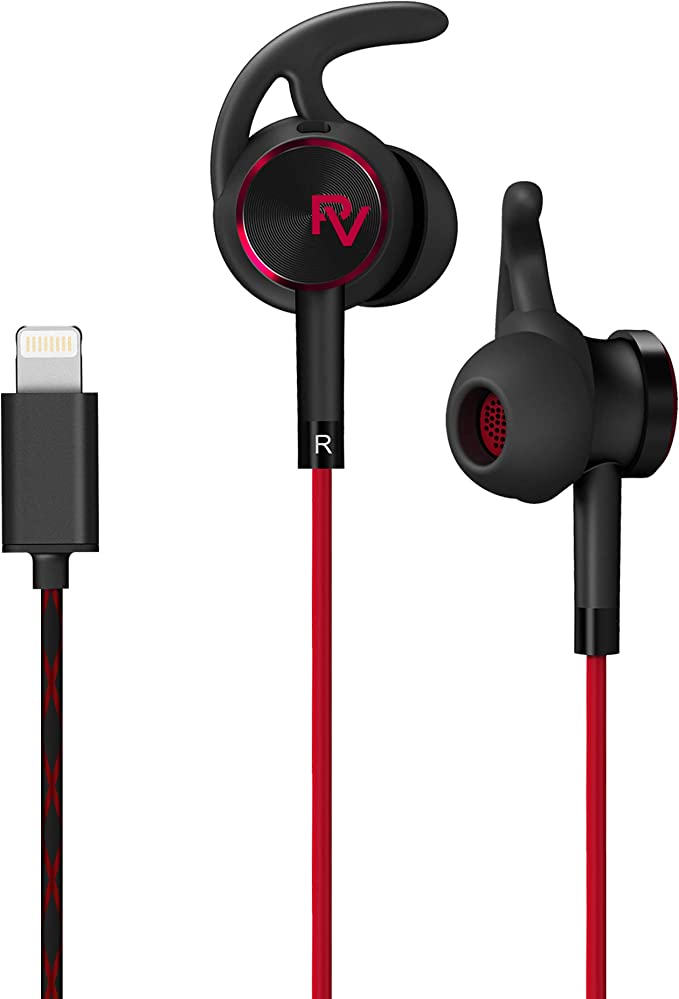ADPROTECH Lightning Headphones with Ear-Hook: Stable and High-Quality Sound for iPhone
Update on Sept. 23, 2025, 5:35 a.m.
Why that “obsolete” pair of headphones in your drawer is a quiet marvel of digital audio, biomechanics, and material science.
In a world relentlessly marching toward a wireless future, the wired earbud feels like a ghost of technology past. It’s the thing you find tangled at the bottom of a bag, a relic from an era before charging cases and Bluetooth pairing rituals. We’ve been conditioned to see its cable as a flaw, a tether to be severed.
But what if we’ve been looking at it all wrong? What if that humble, forgotten accessory is not a symbol of obsolescence, but a masterclass in elegant, everyday engineering?
Let’s perform a thought experiment. Pick up any simple pair of modern wired earbuds—for instance, a common set of MFi-certified sports earphones with an ear-hook design. Don’t look at it as a consumer product. Instead, see it as an artifact. Within its unassuming plastic shell and flexible cable lies a story of a digital revolution, a deep conversation with human anatomy, and the beautiful application of fundamental physics. This is the story of the genius we take for granted.

The Ghost in the Machine: A Digital Revolution in Your Ears
The single greatest misunderstanding about Apple’s removal of the 3.5mm headphone jack in 2016 was that it was merely about connector shape. The true revolution was quieter and far more profound: it was about fundamentally changing how sound travels from your device to your ears.
For over a century, the 3.5mm jack was an ambassador of the analog world. It sent music as a continuous, flowing electrical wave, a direct electronic mimicry of the original sound wave. Think of it as a current of water flowing through a pipe. While beautifully simple, this analog signal was vulnerable. It could pick up electronic “noise” from other components inside the phone, like a pristine river being muddied by nearby runoff. The quality of what you heard depended entirely on the quality of the electronics inside the phone.
The Lightning connector, found on MFi-certified earbuds like our example, is a digital native. It doesn’t send a wave; it sends data. It sends a stream of ones and zeros, a precise, incorruptible blueprint of the music. The crucial component responsible for turning this digital blueprint back into an audible wave—the Digital-to-Analog Converter, or DAC—was evicted from the phone’s noisy internal real estate.
Where did it go? It moved into the headphone itself, often a tiny chip hidden in that little plastic rectangle on the cable that holds the volume buttons.
This is not a trivial relocation. It’s like moving a master translator from a chaotic, crowded public square into a private, soundproofed study. By taking the final, delicate step of analog conversion out of the phone, the Lightning connection gives the headphone’s designer complete control over the final sound. It ensures the signal remains a pure, digital ghost right up to the last possible moment, free from the interference that plagued its analog ancestors. The MFi certification is the official passport for this process, a guarantee that the headphone speaks the precise digital language required for a flawless translation.

The Art of Staying Put: A Conversation with Your Anatomy
Now, look at the earbud’s shape, specifically the ear-hook. It’s easy to dismiss it as a crude piece of plastic bent to prevent it from falling out. But it is, in fact, a remarkably elegant solution born from the study of biomechanics.
Your outer ear, the pinna, is not a simple flap of cartilage. It is a complex, three-dimensional landscape of ridges and valleys, shaped by evolution to capture and funnel sound. For a wearable device designer, this landscape is a playground of natural anchor points.
A standard earbud relies on one primary point of contact: pressure inside the ear canal. This is an inherently unstable relationship, easily broken by the motion of jogging or even just chewing. The ear-hook, however, engages in a more sophisticated conversation with your anatomy. It gracefully traces the curve at the top of your ear, using it as a primary load-bearing anchor. This simple addition brilliantly distributes the earbud’s weight and, more importantly, counteracts the rotational inertia—the flinging force—generated when you move. It’s the same principle a rock climber uses, seeking multiple, stable handholds rather than relying on a single, precarious one.
This mechanical stability allows the soft silicone tip to do its real job, which is not just about comfort, but about acoustics. To hear music properly, especially the low frequencies, the earbud must form a near-perfect acoustic seal inside your ear canal. This seal creates a tiny, closed chamber, allowing the driver to effectively pressurize the air. Without that seal, bass frequencies leak out, leaving the music sounding thin and lifeless.
This is Passive Noise Isolation, an often-underestimated feature. By physically blocking external sound waves, a good seal allows you to listen at lower, safer volumes while hearing more detail. So, that ear-hook isn’t just holding the earbud in; it’s ensuring the integrity of a tiny, private concert hall being built inside your ear.

The Tiniest Piston: Crafting Sound from Magnetism
Deep inside the earbud’s housing lies its heart: a 10mm dynamic driver. This is the engine that finally gives the digital ghost its voice. Its operation is a miniature application of one of the most fundamental principles in physics: electromagnetism.
Imagine a microscopic piston. The driver consists of a thin diaphragm (the piston head) attached to a tightly wound voice coil. This coil is suspended in a powerful magnetic field created by a tiny, permanent magnet. When the translated audio signal—now an electric current—flows through the coil, it generates its own magnetic field.
This new field instantly interacts with the permanent magnet’s field, causing the coil and the attached diaphragm to shoot forward and backward with incredible speed and precision. These vibrations push and pull the air within the sealed ear canal, creating the pressure waves that your eardrum perceives as sound.
The “10mm” specification refers to the diameter of this diaphragm. In the world of micro-acoustics, that’s a considerable size. A larger diaphragm can move more air with each pulse, which is crucial for reproducing low-frequency bass notes with authority and without distortion. It’s a delicate balancing act for engineers—a driver large enough for powerful sound, yet small enough to fit comfortably in the human ear. It is a testament to the art of compromise and optimization that defines great engineering.
So, the next time you find a pair of wired earbuds, pause for a moment. See past the cable. See the clean, incorruptible path of a digital signal. See the elegant, biomechanical dance between a plastic hook and your anatomy. And listen closely for the hum of a tiny, magnetic engine turning pure data into a private symphony.
The greatest technologies aren’t always the newest or the loudest. Sometimes, they are the ones that have become so refined, so commonplace, that we’ve forgotten to see the quiet brilliance hiding in plain sight.



























































